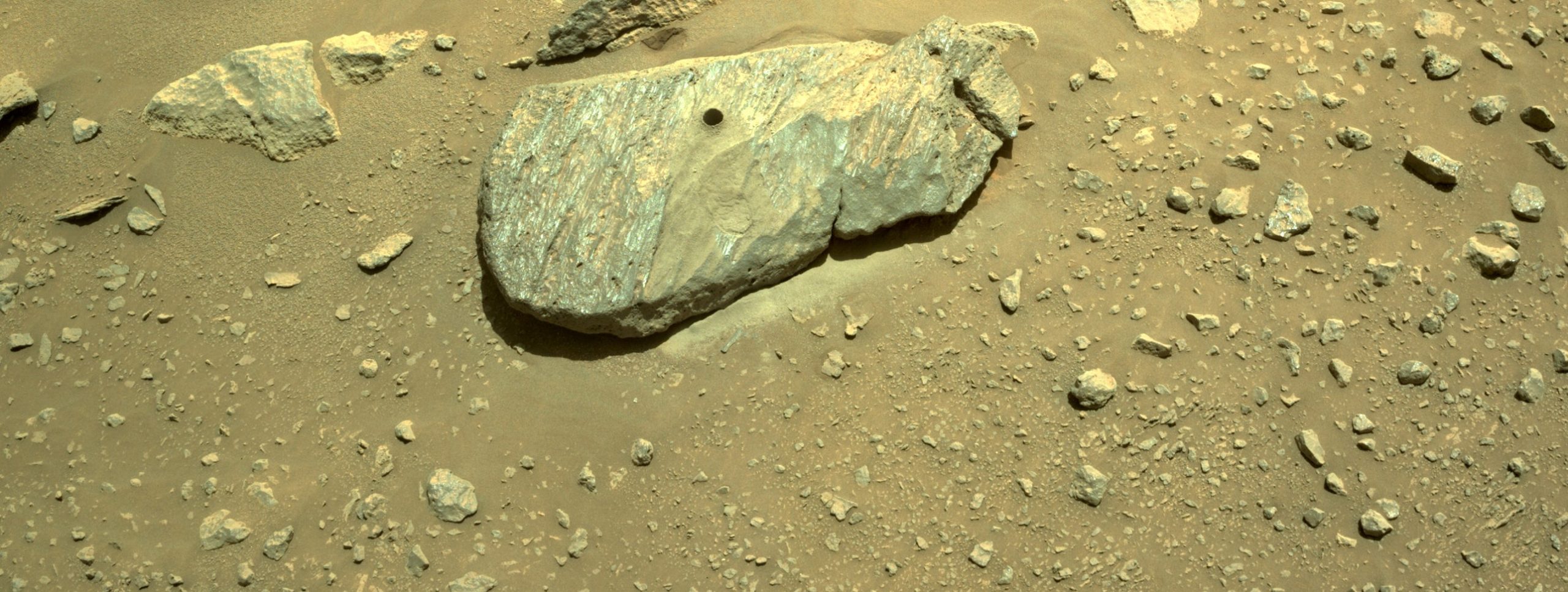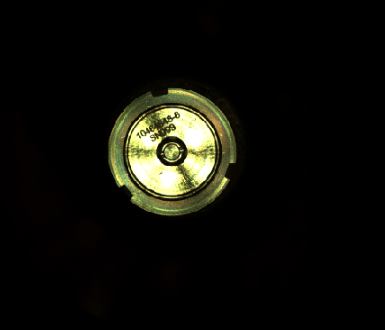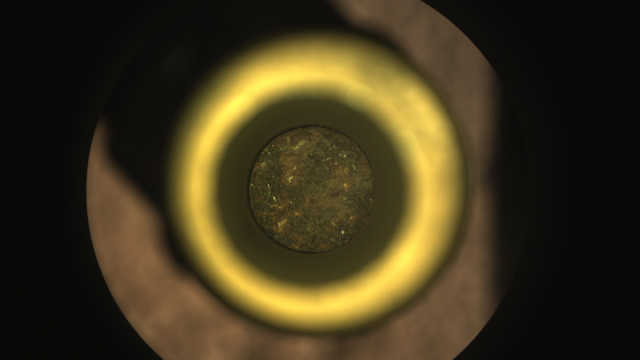For the Perseverance Mars rover, second time’s the charm.
After a disappointing first attempt in early August, which resulted in an empty test tube, NASA confirmed on Monday that Perseverance had successfully collected and stored its first sample of Martian rock while exploring Artuby. The 900 metre ridgeline is near an area believed to hold Jezero Crater’s deepest and most ancient layers of exposed bedrock.
The process to obtain the rock sample, which is a bit thicker than a pencil, began last Wednesday. That day, Perseverance used the rotary-percussive drill at the end of its robotic arm to core into a flat Martian rock, which NASA nicknamed “Rochette,” that was shaped like a briefcase.

After it finished coring, Perseverance snapped a photo of the contents of its unsealed sample tube — number 266, in case you were wondering — so that NASA could confirm it had collected the rock. Mission controllers confirmed that yes, that was indeed a Martian rock, and sent the rover instructions to finish processing the sample.
This included measuring and imaging the rock core, hermetically sealing the tube, taking another photo of the sealed tube, and finally, storing the tube.

Perseverance project scientist Ken Farley said in a news release that getting the first Martian rock sample was a huge milestone.
“When we get these samples back on Earth, they are going to tell us a great deal about some of the earliest chapters in the evolution of Mars,” Farley said. “But however geologically intriguing the contents of sample tube 266 will be, they won’t tell the complete story of this place. There is a lot of Jezero Crater left to explore, and we will continue our journey in the months and years ahead.”
This is just the first of what NASA hopes are many Martian rock samples collected by Perseverance. The rover has taken more than 30 sample tubes to Mars and could fill as many as eight during this first part of its mission, which will last for hundreds of Martian days. NASA is working with the European Space Agency on future missions to bring Perseverance’s samples back to Earth for further study.
If the two space agencies make this happen, the samples would be the first samples brought to our planet from another one.
Once Perseverance completes the first leg of its mission, it will make its way to Jezero Crater’s delta region, which encompasses the fan-shaped remains of the spot where an ancient river met a lake within the crater. NASA believes that it’s possible the region could be rich in clay minerals. Based on what we know from Earth, these minerals can preserve fossilised signs of microscopic life.
